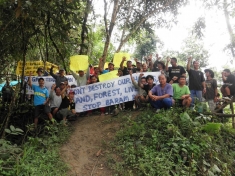Human Rights Must Come First

In some countries, dams are being built without the basic protection of human rights.
In Sarawak, Malaysia, the Murum Dam was built before even its environmental impact assessment was published or discussed with affected communities.
In Brazil, the Belo Monte Dam was approved by the government in 2005 even before an EIA had been written in 2008; and subsequent consultations with affected indigenous people in 2009 failed to attain their Free, Prior and Informed Consent (FPIC).
In Ethiopia, affected communities were forcibly resettled from an area where a future sugar plantation was to receive water from the Gibe III Dam.
In China, 1.3 million people were displaced by the Three Gorges Dam, and of those who were resettled, a large percentage have not seen livelihood improvements, though the government is undertaking efforts in this regard.
The Murum Dam, the Belo Monte Dam, the Gibe III Dam, the Three Gorges Dam. These and many others are characterized by huge social and environmental impacts; corruption; violations of human rights; and, often, by an unresponsive legal system that prioritizes the developers' interests over the rights of affected communities. How can civil society respond in situations where grievances go unheard; where access to justice is denied; or where little legal recourse is available?
After a year and a half of research and writing, today International Rivers publishes a new civil society guide: "Dam Standards: A Rights-Based Approach." The guide catalogues significant human rights and environmental standards that civil society can promote at each stage of a dam project. From a dam's planning in national strategy documents to the assessment of a project's environmental and social impacts, from the implementation of mitigation action plans to forums for reparations, and even to the eventual decommissioning of a dam, this guide describes the standards that civil society can promote in order to influence decisions.
Some dam builders and financiers will attempt to follow best practices. Too often, however, they will make nice-sounding commitments on paper while continuing with business-as-usual on the ground. Indeed, driven by their responsibility towards providing investors with returns, dam builders and financiers will cut corners or ignore their responsibilities to affected communities altogether. Such situations can only produce negative outcomes, tension and conflict.
In this sense, I would argue, a much stronger gauge of sustainability is the satisfaction of human rights. If the greater measure of success of an industry were the degree to which affected communities feel that their rights have been respected, many of today's dam builders would receive a failing grade from those who they claim immediately benefit.
We hope this guide will aid civil society to promote a rights-based approach to dam standards at each phase of discussions with decision-makers. Let's challenge the way that the dam industry operates. Let's hold the dam industry accountable to its ultimate responsibility: the rights of human beings.


